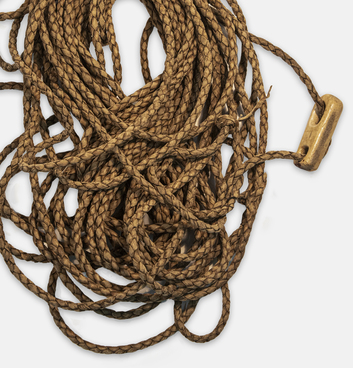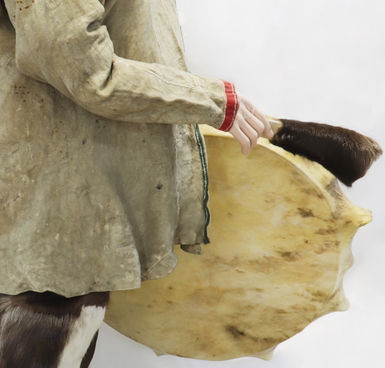Nenets material culture is represented by a variety of summer and winter clothing, footwear, household items, and tools. Metal pendants and plaques are often found among them.
The collection of the Nenets Museum of Local Lore includes over a hundred pieces of jewelry related to the nomadic cultures of northeastern Europe. They are represented by both independent items and elements of décor on belts, cult objects, and clothing.
The Nenets did not work with non-ferrous metals and only cast pewter items. They obtained copper-alloy artifacts through exchange with visiting merchants and later through trade. In the 19th and early 20th centuries, the nomads attached particular importance to brass and copper pendants. These products were treasured as amulets, protecting the wearer against evil spirits and diseases.
For reindeer herders, cast plaques and pendants worn on clothing indicated the owner’s wealth and social status. Nenets metal jewelry includes sets of jewelry worn on men’s, women’s, and children’s clothing, shamanic attributes, pendants attached to cult objects, and items decorating reindeer harnesses.
Typical women’s jewelry includes “ni yesya” buckles from women’s belts (sometimes equipped with ring-shaped pendants), rings, chains, hat pendants in the form of metal threading, as well as slotted and solid plaques with various scenes braided into plaits.
The main element of men’s jewelry was the belt decoration. Such decorative elements are called “ni mara” and include clasps, metal elements along the belt’s perimeter, openwork plates, metal buttons, and chains with various objects suspended from them such as a sheath with a knife, a whetstone, a gunpowder flask, and a bear’s tusk — a hunter’s amulet.
The appearance of metal jewelry on the belts of Nenets men is associated with the traditions of the Izhma Komi. At the turn of the 20th century, reindeer herders bought jewelry at fairs, from traders and craftsmen — there are known workshops that designed custom jewelry for reindeer herders in Kimzha, Izhma villages, Beryozovo, and Tobolsk.
During the Soviet period, trade organizations began
to sell jewelry to Nenets reindeer herders. Nowadays, they are rarely offered
for sale. Modern Nenets wear belts made of thick leather and metal jewelry made
by hand based on old prototypes.



